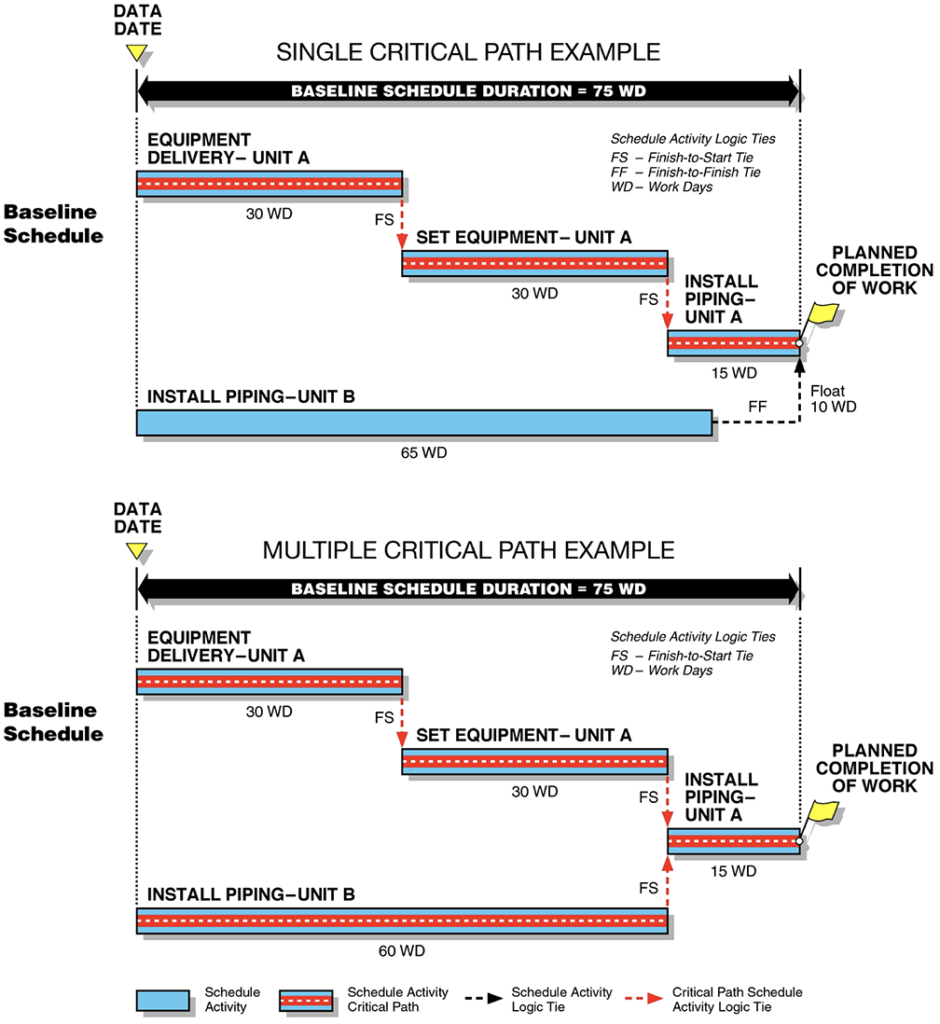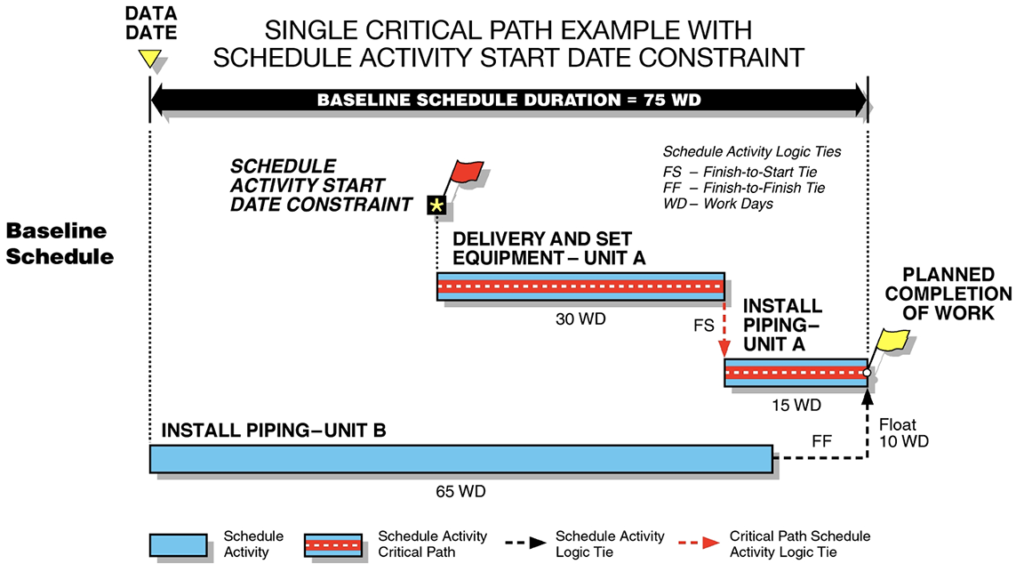
October 30, 2023
The Critical Path Defined
This is the second blog post in a five-part series that discusses potential challenges and steps to consider when identifying and analyzing the critical path.
The first post in the series discusses the purpose of time management on construction projects, and this post concerns defining the critical path. The third post addresses steps for assessing whether the critical path is valid, the fourth post concerns critical path schedule quality checks, and the fifth post discusses steps to consider for identifying the critical path.
The Critical Path Defined
AACE International defines the terms “critical path” and “critical task” as follows:1
CRITICAL PATH – The longest continuous chain of activities (may be more than one path) which establishes the minimum overall project duration. A slippage or delay in any activity by one time period will extend the final completion correspondingly.
CRITICAL TASK – A task that must finish on time for the entire project to finish on time. If a critical task is delayed, the project completion date is also delayed. A critical task has zero slack time. A series of critical tasks make up the project’s critical path.
If a critical path activity is delayed by one or more days, then any successor activities, including the project’s final completion activity, will be delayed, unless mitigations are taken to recover the delay. The following are two scenarios among many that may explain the rationale behind adopting a certain critical path:
- Scenario No. 1: The critical path may be based on the calculated result of the planned network logic and estimated activity durations and other contractual milestones included in the schedule; or
- Scenario No. 2: The critical path may be based on the collaborative input from the project manager, superintendent, subcontractors, and/or others to force the critical path to go through certain activities because, based on these professionals’ experience on similar projects, the criticality typically goes through this work sequence.
Either a single path or multiple parallel paths may represent the critical path. Figure 1 provides a simple example of a single critical path and multiple critical paths.
Figure 1
Single and Multiple Critical Path Examples

Ordinarily, the critical path is represented by a continuous path of activities that is traceable from the data date to the final completion activity, as depicted in Figure 1. However, in certain situations, the critical path may not be represented by a continuous path of activities. The start of the critical path may begin at a point in time after the data date. For example, it is not uncommon to find one or more critical path activities with an imposed start or finish constraint. Hence, the constraint influences the critical path and may not allow it to fully trace back to the data date. Figure 2 is an example of a critical path that is influenced by an activity start constraint.
Figure 2
Example of a Critical Path Influenced by Constraint

If a constraint influences the critical path, as illustrated in Figure 2, the basis for the use of the constraint that dictates that start of the critical path should be scrutinized for reasonableness. Further, a rationale for using a constraint that influences the critical path should be well documented and explained. This is typically found within the schedule basis memorandum, which is a written document that describes, explains, and details how the CPM schedule was developed and what assumptions were utilized.
1 See AACE® International Recommended Practice 10S-90, Cost Engineering Terminology, dated May 15, 2023, p. 39 of 134.
ADDITIONAL RESOURCES

Blog
Discover industry insights on construction disputes and claims, project management, risk analysis, and more.
MORE

Articles
Articles by our engineering and construction claims experts cover topics ranging from acceleration to why claims occur.
MORE

Publications
We are committed to sharing industry knowledge through publication of our books and presentations.
MORE
RECOMMENDED READS
Challenges and Considerations in Identifying and Analyzing the Critical Path
This first post in a series on identifying and analyzing the critical path discusses the purpose of time management on construction projects.
READ
Calculating the As-Built Critical Path
This article discusses procedures to ensure that the as-built driving lag values are determined objectively to avoid inconsistent or subjective assessments in calculating the as-built critical path.
READ
Schedule Quality Assurance Procedures
This article discusses procedures to rectify common problems with project schedules, including evaluating the reasonableness and completeness of the critical path.
READ

